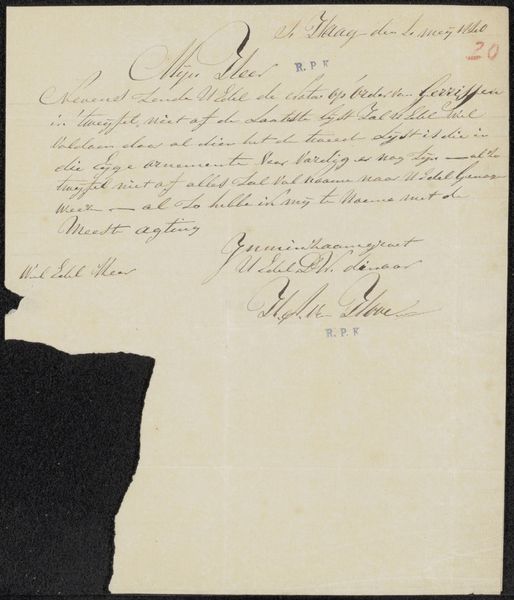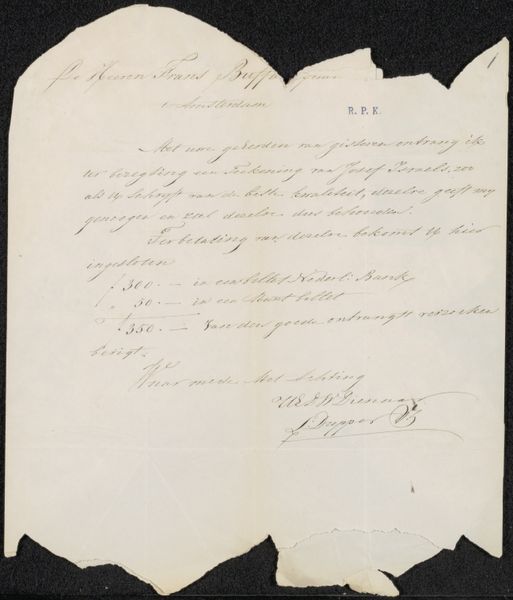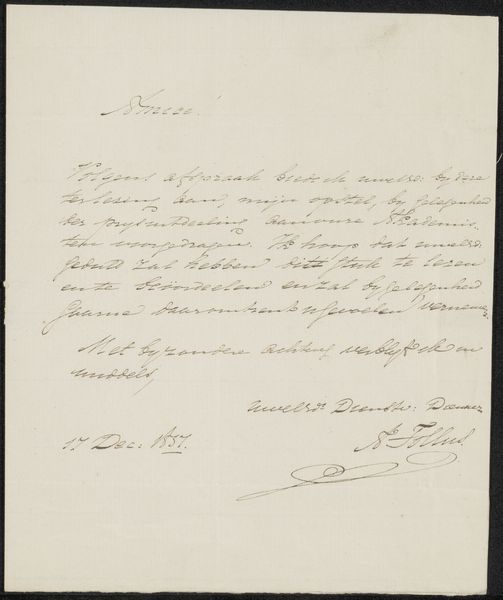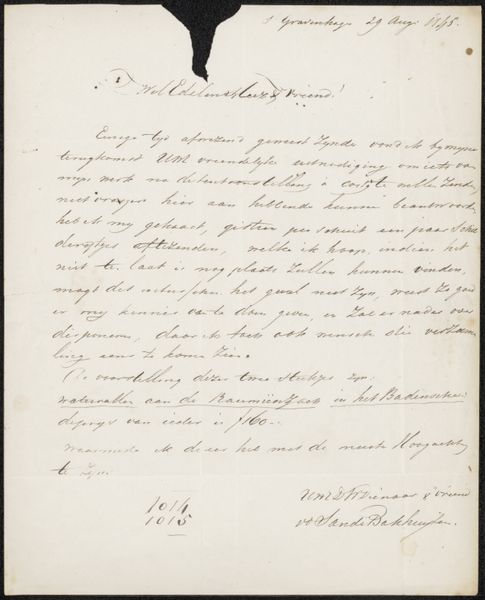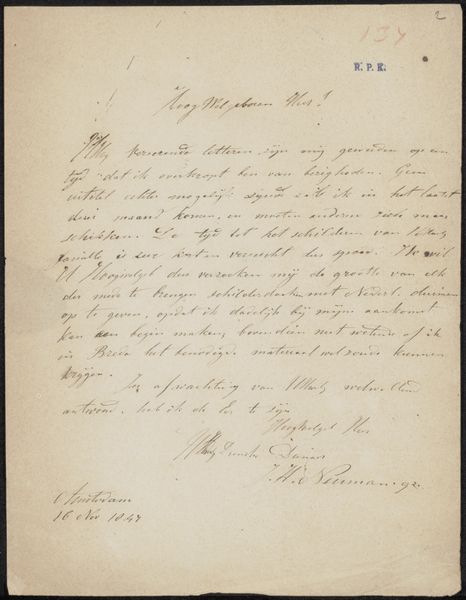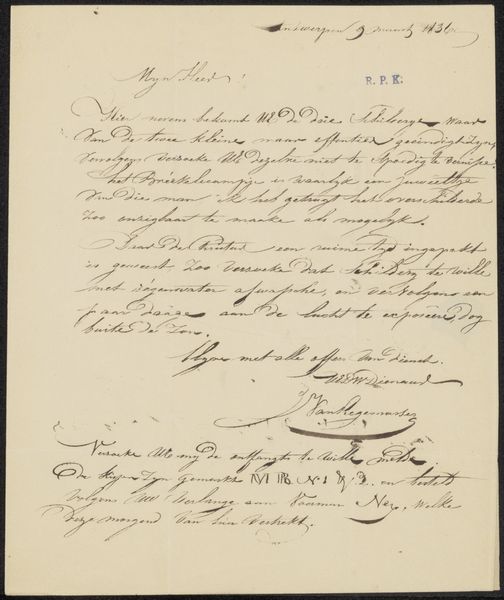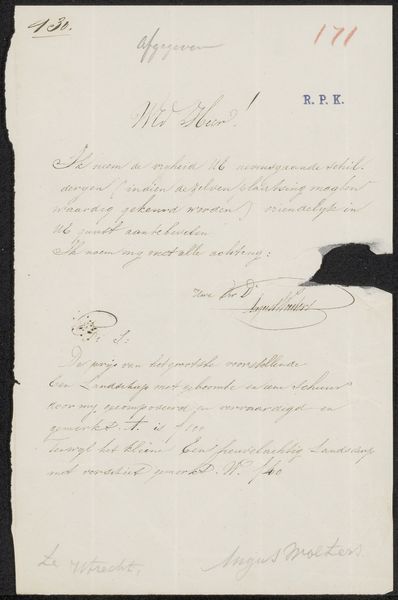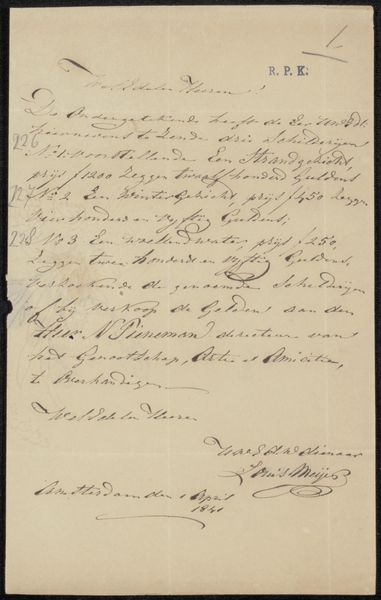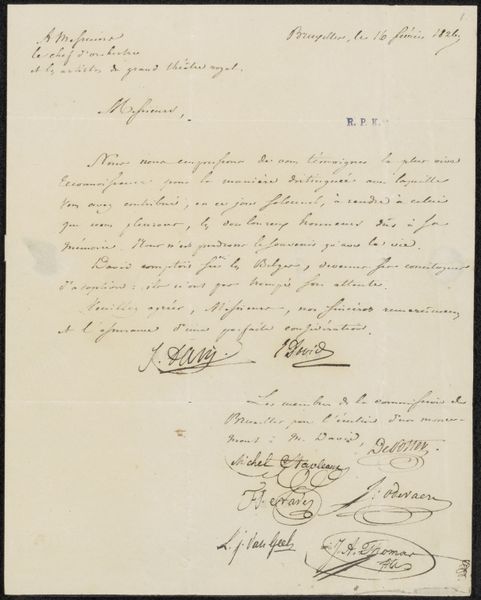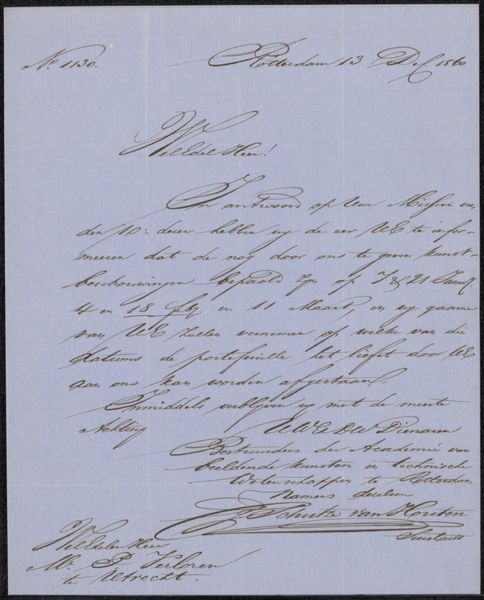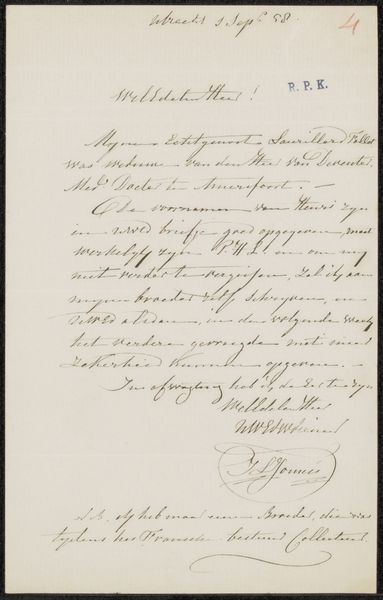
drawing, paper, ink, pen
#
drawing
#
paper
#
ink
#
romanticism
#
pen
Copyright: Rijks Museum: Open Domain
Curator: We're looking at Jacob Ernst Marcus's "Brief aan Jan Schouten (dichter)," possibly penned between 1824 and 1825. It's currently held at the Rijksmuseum. Editor: My first impression is its intimacy; the scale of the paper and delicate script evoke a private communication. You can almost feel the pressure of the pen on the page, marking a moment in time. Curator: Absolutely. Marcus, a Dutch-Jewish artist working during a period of increasing Romanticism, often navigated complex social landscapes. This letter offers a direct, unfiltered perspective into his network and perhaps his economic realities as he interacted with literary figures like Schouten. The labor required to write such a missive must also be considered. Editor: I'm interested in the materiality, actually. The choice of paper and ink reveals something. Paper, while seemingly mundane, was still a crafted object with varied grades and costs, implying a certain social positioning, right? And then the particular character of the ink tells us even more of the physical creation process. Curator: Indeed. The letter form itself became a battleground for enacting or subverting norms. Considering Marcus's cultural background, his choice to engage with a poet like Schouten raises questions about social integration, cultural exchange, and perhaps even economic survival through patronage or collaborations in an evolving literary scene. The letter itself can also serve as artistic output if crafted artfully. Editor: I'm drawn to the act of writing, too – a very material process, and in contrast to print. The care taken, the slight variations in pressure and stroke, speak to a personal, almost tactile interaction. You are correct in stating it becomes an extension of the artists mind, making it something beyond mere writing. Curator: And there's something deeply revealing about handwriting itself, particularly within the context of early 19th-century Romanticism, where individualism and emotional expression were so valued. This letter could be a portal into those broader movements while also offering insight on individual identity and aspirations. Editor: Precisely. Looking at this letter makes me consider the labor of intellectual exchange during a historical moment as revealed through paper, ink, and hand. It highlights not only the artistic creation of communication, but also underscores the social context that makes it meaningful and what those very materials convey about how art creates shared spaces. Curator: I agree entirely. This work, while seemingly straightforward, opens multiple avenues into understanding 19th-century Dutch society, Marcus's role within it, and how the simplest materials become vessels for multifaceted human experience. Editor: A fantastic microcosm – a gesture toward bigger societal pictures and networks through what is literally right in front of us!
Comments
No comments
Be the first to comment and join the conversation on the ultimate creative platform.
